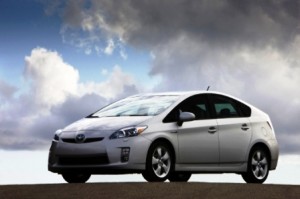
Even the Prius saw sales slide, with incentives needed to keep the hybrid's metal moving out showroom doors.
It was a good month for the U.S. auto industry – most of the industry, anyway, but despite a mighty push to overcome its ongoing safety problems, Toyota bucked the market trend by posting a 3.2% sales decline for November. Adjusted to a daily sales basis, the decline, the maker noted, was 7.3%
The Japanese giant, long the industry benchmark, was clearly unable to keep up with the competition during a month when Detroit’s long-troubled makers all posted double-digit gains. In fact, other than Toyota, it was hard to find any brand that didn’t report a solid month, Nissan up 45%, year-over-year, and Audi reporting an all-time record for November, which could help the German brand push past the 100,000 sales mark for the first time ever in the U.S.
The poor showing was particularly troubling for Toyota which, in October, was the only major automaker to report a decline – of 4%.
What’s going wrong? “Without new product to compete with and stripped of its bulletproof quality reputation, Toyota is forced to sell on the deal,” Edmunds analyst Jessica Caldwell said in a statement.
It has been just over a year since Toyota announced the first of two big recalls related to so-called sudden acceleration – also known as unintended acceleration. A second recall followed in January during which the maker decided to temporarily halt the sale of key models potentially afflicted with sticky accelerator pedals.
Though a federally-authorized study, conducted by NASA, has yet to be completed, early indications suggest many of the complaints of runaway Toyotas could be the result of driver error, rather than vehicle defects. But that point may be lost, not only because of the glaring headlines about sudden acceleration but also by the fact that Toyota products are suddenly experiencing so many other problems.
The models that haven’t been affected by one recall or another, over the last year, are few. Even the newest version of the iconic Prius hybrid was recalled to resolve a brake defect. And there were recalls for excessive corrosion problems on pickups and minivans, as well as stalling problems with the Corolla and Vibe. In all, Toyota has recalled about 14 million vehicles worldwide over the last 12 months, 11 million in the U.S. alone.
And that figure doesn’t include some more limited service actions. Earlier this week, the maker announced it would make voluntary repairs on about 650,000 2004 – 2007 Prius hybrids because of defective cooling systems that could cause their drive systems to overheat and go into fail-safe mode.
Significantly, sales of Toyota’s hybrid models slipped 7% for November, and even the Prius — which until recently was in short supply — now needs incentives to bolster demand.
As anyone who watches television is likely aware, the maker has been struggling to fight back. It has launched a major multimedia campaign to impress American consumers with its focus on safety and quality. And to back that up, the Japanese maker launched the first mainstream free maintenance program.
To further sweeten the deal, spending on incentives has jumped from $1,777 a month, a year ago, to $1,948 per vehicle for November 2010. That’s still well behind General Motors and Chrysler, which have put as much as $4,000 on the table to push vehicles out the door, in recent years. But the domestics, fresh from last year’s bankruptcy filings – and consequent cuts in production capacity – have been able to trim back their givebacks even while watching sales gain ground.
While times may be tough, industry insiders say they don’t expect Toyota to remain hobbled forever. The maker not only has huge cash reserves but tremendous R&D resources that it is using to get its product development program into high gear. And new product almost always helps a maker move the metal.
But, for the moment, competitors ranging from GM and Ford, to Honda and Hyundai are all hoping to take advantage of Toyota’s uncommon weakness.
